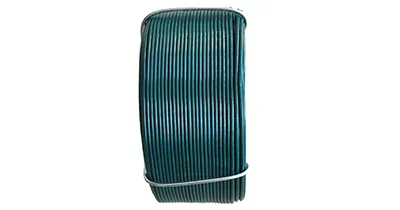-
 Phone:
Phone: -
 Email:
Email:

rockfall netting installation
Rockfall Netting Installation A Comprehensive Guide
Rockfalls pose a significant risk in mountainous and hilly terrains, where loose rocks can easily dislodge due to natural weathering processes or human activities. The consequences can be disastrous, posing threats to infrastructure, roads, and human safety. To mitigate these risks, various protective measures can be employed; one of the most effective solutions is the installation of rockfall netting. This article will delve into the importance of rockfall netting installation, the materials used, the installation process, and maintenance considerations.
Importance of Rockfall Netting
Rockfall netting is a crucial component of slope stabilization and rockfall protection systems. By capturing or deflecting falling rocks, netting helps to prevent debris from reaching critical areas such as roads, railways, and populated zones. The implementation of rockfall netting not only enhances public safety but also minimizes the potential for economic losses linked to property damage and traffic disruptions.
In addition, rockfall netting contributes to the preservation of natural landscapes by reducing the frequency of erosion and subsequent rock slides. This ecological benefit is vital for maintaining biodiversity in mountain ecosystems, where organisms often rely on stable rock formations for habitat.
Materials Used in Rockfall Netting
The effectiveness of rockfall netting depends significantly on the materials used in its construction. The most common materials include
1. Steel Wire High-tensile steel wire is the primary component of rockfall netting. It is chosen for its strength and durability, enabling it to withstand the impact of falling rocks.
2. Geosynthetic Fabrics In some cases, geosynthetic materials may be added to enhance the netting system. These fabrics can help in soil retention and prevent smaller debris from passing through.
3. Anchors Mechanical anchors are necessary to secure the netting to the slope. These can vary from dynamic anchors for unstable rock formations to more traditional methods for less active slopes.
4. Supports Additional structural supports may be required, depending on the slope's steepness and rockfall potential. This can include posts and cable systems that reinforce the netting.
rockfall netting installation

Installation Process
The installation of rockfall netting is a systematic process that requires careful planning and execution. Here’s a generalized breakdown of the steps involved
1. Site Assessment Before installation, a comprehensive geotechnical survey must be conducted to assess the slope's stability and the potential rockfall hazard. This stage identifies the size and type of netting required.
2. Design Phase Based on the site assessment, engineers create a design that takes into account the specific conditions of the slope, including its angle, rock type, and historical rockfall activity. This design will outline the netting layout and the required materials.
3. Preparation of the Site The installation site must be cleared of any loose debris and vegetation that could interfere with the netting's effectiveness. This may involve additional stabilization measures.
4. Installation of Anchors and Supports Mechanical anchors are installed into the rock face or ground, and support structures are erected as outlined in the design. It is crucial that these components are securely fastened to handle the anticipated forces from falling rocks.
5. Hanging the Netting Once the anchors are in place, the steel wire netting is attached. It should be tensioned adequately to ensure it maintains its integrity during impacts. A proper tensioning procedure is essential for durability.
6. Final Inspections After installation, a thorough inspection is conducted to ensure everything is secure and functioning. Any necessary adjustments are made to optimize performance.
Maintenance Considerations
While rockfall netting systems are designed for longevity, regular maintenance is crucial to extend their lifespan and effectiveness. Inspections should be conducted periodically to check for signs of wear, damage, or displacement. Attention should be given after significant weather events, such as heavy rainfall or storms, which may alter the stability of the surrounding rock and soil.
In conclusion, rockfall netting installation is a vital process in protecting public safety and infrastructure from the dangers posed by falling rocks. By utilizing durable materials, adhering to a comprehensive installation process, and committing to regular maintenance, communities can significantly reduce their risk of rockfall incidents and preserve the natural landscape for future generations.
-
Wire Mesh for Every Need: A Practical SolutionNewsJul.25,2025
-
Steel Fences: Durable, Secure, and Stylish OptionsNewsJul.25,2025
-
Roll Top Fencing: A Smart Solution for Safety and SecurityNewsJul.25,2025
-
Cattle Farm Fencing Solutions for Maximum SecurityNewsJul.25,2025
-
Affordable Iron Binding Wire SolutionsNewsJul.25,2025
-
Affordable Galvanized Wire SolutionsNewsJul.25,2025
-
Wire Hanger Recycling IdeasNewsJul.25,2025








